A Homiletician, a Theologian, and a Biblical Scholar Walk into a Bar.... (A Guest Post)
From Dr. Leah Schade’s guest post: “Every preacher should have a ‘circle of trust’ that they take to their ‘sermon watering hole.’ The circle should include people you know you can rely on to help you encounter the Bible in a responsible way in order to say something meaningful about who God is and what God is doing in the world. People who spark ideas for crafting a sermon that will hook your listeners, help them follow you, and give them a reason to say “amen!” Here are three suggestions for expanding your circle of trust in sermon preparation.”

A New Goal for Preachers: Peaceful Productivity (A Guest Post)
Recently, I guided participants through a process to make space for sermon prep for the multiple sermons they’d be writing for Holy Week and Easter. I encouraged three steps, and while there was some resistance to the third, once completed, I sensed a shift in energy and renewed sense of enthusiasm for the tasks ahead. Read on to energize your own sermon prep with this 3-step scheduling process.

The Power of Questions: How to Challenge Assumptions in Preaching
An assumption is the lightning fast explanation we generate to connect random events or pieces of information into a believable narrative. We do this when we don’t have the time or mental bandwidth or confidence to figure out the real story. Instead, we rely on the easiest or fastest explanation to avoid the discomfort of not knowing. But when assumptions block us from the truth—from the gospel—we have a real problem.

X Marks the Spot: Blocking Time for Yourself (A Guest Post)
We’re tempted to believe the spirit moves by whim in un-scheduled and unpredictable ways. But Peterson models, and I’ve experienced, that the inspiration and insights of preaching are more often rooted in practices that make space for us to invite and hear the spirit.

When the Mystery is Magnified: the Gospel and the Microscope (A Guest Post)
“The main thing I remember about the microscope was the mystery of how changing the magnification could make the object I was looking at appear completely different, even though it was the same leaf or seed or bark or flower.” The same is true when we examine the biblical narratives. We can use three different lenses to understand our lives as followers of Jesus.

A Preacher's Twelve Favorite Questions
A Nobel-winning physicist told a student that the secret to his genius was keeping a list of his twelve favorite problems top of mind as he carried on about his days. As he encountered new ideas, people, or tools, he applied them to his problems, and occasionally, an unanticipated connection solved a problem. Voila. Genius! I think preachers could benefit from a similar practice, and I share how inside.

Adaptive Leadership (Part 3): Raise the Heat (A Guest Post)
Engaging in Adaptive Leadership involves managing the “thermostat” of your congregation. If it’s too cold in your system, people get stuck in work avoidance. If it’s too hot in your system, people respond with a “fight, flight, freeze, or appease” response. To make progress toward transformation, we must set the system’s temperature above a threshold of learning, and then keep the temperature below the limit of tolerance. Here’s how.

Adaptive Leadership (Part 2): Navigating the Gap to Find Solutions to Complex Challenges (A Guest Post)
Unlike technical challenges with clear, go-to solutions, adaptive challenges are about changing priorities, beliefs, habits, and loyalties for a compelling purpose. Solving these challenges requires deep learning to develop new tools, relationships, methods, and practices. “Adaptive leadership” is necessary for these challenges involving significant culture shifts or organizational changes that don’t come with a blueprint.

Adaptive Leadership (Part I): What preaching can teach us about how to solve congregational conflicts (a guest post)
In ministry, there are often conflicting ideas about where resources should be focused or what ministries should look like. In other words, there’s a gap between our values or beliefs and the reality before us. Dale Matherly, Backstory Preaching Mentor, suggests we can look to our preaching framework for help navigating the gap and casting a vision of the future that unifies our congregations around a shared destination.

5 Tools Making Preaching & Life Easier, More Inspired, and More Fulfilling (A Resource Round-Up)
I’ve noticed a number of improvements in my preaching and general life lately, so I’m sharing the tools that have been most influential in this shift. Perhaps one or more would be of use to you, too.
